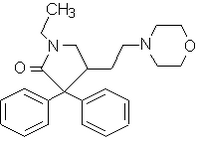Mrs. Saraswathy, 52 yrs old female, Housewife, edu cated up to 9th standard from an upper middle class family got admitted in MCV Hospital Pollachi, Coimbatore on 22.2.2003. At the time of admission she had the complaints of loud snoring, Dyspnoea while sleeping, sleep interruptions Dysphagia. She was diagnosed as a case of obstructive sleep apnoea. Radiograph and CT scan of the neck shows degenerative changes in the cervical vertebrae non-specific lymphadenopathy in the left carotid space on 23.02.2003. She had undergone "Thyro-plasty with Uvul-opalato Phary-ngoplasty and Cenioglossal Advancement." After the surgery she was put on medication such as Inj: Bluclox, Tab: Remulide, Cap: Comfortex. Subsequently she developed respiratory discomfort and tracheostomy was done on 2.3.03. With early recognition of complication & treatment and comprehensive Nursing care patient had full recovery and got discharged on 9.3.03.
OBSTRUCTIVE SLEEP APNOEA
Definition:
The obstructive sleep apnoea is defined as 30 or more apnoeic episode during a period of 7 hours of sleep and causing sleep disturbances, cardiac problems, intellectual deterioration in due course.
Etiology:
Nose
- Nasal polyps
- Deviated Nasal Septam
- Rhinitis
- Nasal Packing
- Larygnx
- Tumor
-Oedema
Pharygnx
- Nasopharyngeal Tumour
- Enlarged adenoids
- Enlarged palatal tonsil
- Enlarged lingual tonsil
- Large Tongue
- Myxeedema
- Acromegal
- Micrognathia
- Obesity
CLINICAL MANIFESTATIONS
- Loud snoring
- Excessive day time sleep
- Morning headache
- Systemic hypertension
- Frequent awakening
- Obesity
- Personality changes
- Intellectual Deterioration
- Poor memory
- Abnormal body movement
- Right heart failure
- Difficulty in concentrating
DIAGNOSTIC EVALUATION:
- History
- Physical examination
- Poly cosmography
- Pharyngeal manometer
- MEDICAL & SURGICAL MANAGEMENT
- Administer drugs like acetozolamide, Theophyline, doxapram, buspirone, medroxyprogesterone, protriptyline etc.
- Nasal continuous positive airway pressure therapy
- Use of orthodontic devices like tongue retaining device to prevent the obstruction of airway.
- Surgical management include uvulopulatopharyngo plasty and Thyroid to Hyoid approximation with Genloglossal advancement.
SURGICAL MANAGEMENT TO THEPATIENT:
On 26-02-2003 she had undergone Uvulopalatopharyngoplasty. In this horizontal incision made at the level of mid portion of thyroid cartilage & strap muscles retracted cartilage window made & silicon ?plug inserted to window with the use of blade & lazer bulky soft palate and partial thickness of Uvala removed. After surgery she was put on IV fluids for 2 days.
NURSING MANAGEMENT:
During the post-operative period she had developed some complaints
- Dyspnoea
- Pain
- Fluid volume deficit
- Insomnia
- Fear & anxiety
NURSING DIAGNOSIS & INTERVENTIONS:
1. Pain related to tissue trauma secondary to surgical incision. Interventioins & Rationale:
- Assess the characteristics of pain such as location, duration, frequency, severity to know the base line date for further management.
- Provide comfortable bed and position to reduce the pain.
- Provide calm and quiet environment to decrease the external stimuli.
- Administer analgesics to relieve pain
2. Dyspnoea related to effect of anaesthesia and nature of surgery. Intervention & Rationale, Related to Air Way
- Assess the breathing pattern of the patient to plan further nursing interventions
- Provide oxygen to the patient to relieve breathing difficulty
- Provide suction ing to remove the excessive mucous from upper air way.
- Teach about breathing & coughing exercises to promote respiration.
- Administer bronchodilators to relieve the dyspnoea
3. Fluid volume deficit related to excessive blood loss during surgery.
Interventiions & Rationale, Related To Fluid & Electrolyre Balance
- Assess the general condition of the patient to know the baseline data.
- Check the surgical site for any haemorrhage to know the amount of blood loss.
- Administer IV fluids and blood to maintain the normal fluid & electrolyte volume.
- Advice to take iron rich food items to prevent anaemia.
- Alteration in nutritional pattern less than body requirement related to less intake of food.
Interventiion & Rationale, Related ToNurtition
- Assess the nutrition of patient to plan better nursing care
- Provide small & frequent diet to improve the nutritional status.
- Advice to take liquid diet to reduce dysphasia
- Administer multivitamin Tablets to prevent the vitamin deficiency
5. Insomnia related to pain
Interventiion & Rationale, Related To Comfort
- Provide comfortable bed & position to the patient to induce sleep
- Restrict the visitors to prevent the external stimuli.
- Provide divertional therapy to the patient to divert the mind from pain
- Administer analgesics and sedatives to induce sleep
6. High risk for complication such as respiratory tract infection.
Intervention & Rationale, Related To Safety
- Check the vital signs to know the functioning of vital organs.
- Follow the aseptic technique while doing the procedures to prevent the infection.
- Advice to take medications in proper time to prevent the complications
- Advice to come for regular check up for early identification of the complications
- Provide proper dressing to the patient to prevent the infection.
OTHER NURSING MANAGEMENT:
Provide fowler's position to promote chest expansion & comfort. Provide psychological support to the patient provide active & passive exercises to improve the activity level of the patient, provide written information to the patient to improve the knowledge level of the patient.
Copyright Trained Nurses' Association of India Jan 2004
Provided by ProQuest Information and Learning Company. All rights Reserved



